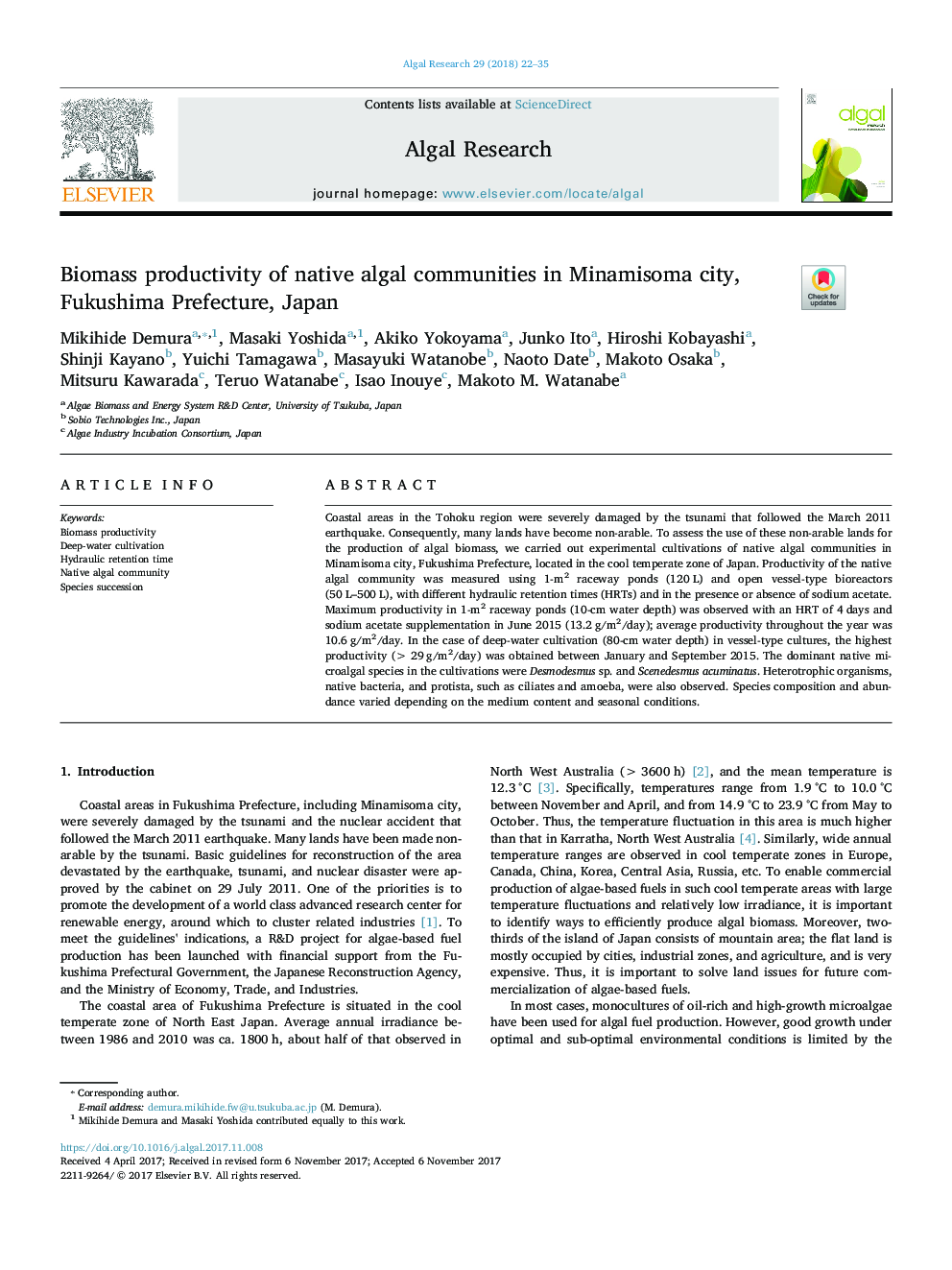| Article ID | Journal | Published Year | Pages | File Type |
|---|---|---|---|---|
| 8086206 | Algal Research | 2018 | 14 Pages |
Abstract
Coastal areas in the Tohoku region were severely damaged by the tsunami that followed the March 2011 earthquake. Consequently, many lands have become non-arable. To assess the use of these non-arable lands for the production of algal biomass, we carried out experimental cultivations of native algal communities in Minamisoma city, Fukushima Prefecture, located in the cool temperate zone of Japan. Productivity of the native algal community was measured using 1-m2 raceway ponds (120Â L) and open vessel-type bioreactors (50Â L-500Â L), with different hydraulic retention times (HRTs) and in the presence or absence of sodium acetate. Maximum productivity in 1-m2 raceway ponds (10-cm water depth) was observed with an HRT of 4Â days and sodium acetate supplementation in June 2015 (13.2Â g/m2/day); average productivity throughout the year was 10.6Â g/m2/day. In the case of deep-water cultivation (80-cm water depth) in vessel-type cultures, the highest productivity (>Â 29Â g/m2/day) was obtained between January and September 2015. The dominant native microalgal species in the cultivations were Desmodesmus sp. and Scenedesmus acuminatus. Heterotrophic organisms, native bacteria, and protista, such as ciliates and amoeba, were also observed. Species composition and abundance varied depending on the medium content and seasonal conditions.
Related Topics
Physical Sciences and Engineering
Energy
Renewable Energy, Sustainability and the Environment
Authors
Mikihide Demura, Masaki Yoshida, Akiko Yokoyama, Junko Ito, Hiroshi Kobayashi, Shinji Kayano, Yuichi Tamagawa, Masayuki Watanobe, Naoto Date, Makoto Osaka, Mitsuru Kawarada, Teruo Watanabe, Isao Inouye, Makoto M. Watanabe,
